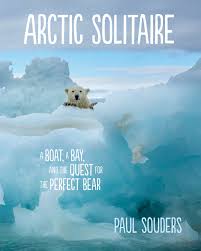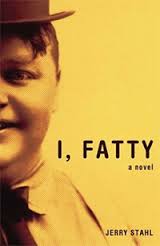Harper, Kenn. Give Me My Father's Body: The Life of Minik, the New York Eskimo. New York: Washington Square Press 1986. Print
Qisuk and Nuktqo were at Cape York already when the vessel hove into view. They recognized her from a distance -- it was the Hope again, the same chartered Newfoundland sealer that had come the year before...It was August 1897. This was Robert Peary's fourth expedition to northwestern Greenland, the home of the Polar Eskimos.
Description:
This is the true history of Minik, a Polar Eskimo (this is the author's historic term) who as a child lived alone in New York City at the turn of the century. Brilliantly, heartbreakingly told by Kenn Harper in Give Me My Father's Body: The Life of Minik, the New York Eskimo, this is a book that grabs you immediately for its uniqueness of story, characters, and setting.
In 1897, Robert Peary, the polar explorer, returned to the United States from his most recent voyage to northwest Greenland. Among other treasures from this failed quest to reach the North Pole, Peary brought with him six Polar Eskimos. He felt these four unique adults and two children would be welcome gifts to be studied by anthropologists at the Museum of Natural History, (although the museum had not asked Peary to bring them any "live specimens").
All six Eskimos were scheduled to live in New York City for one season and then be returned to their home on Peary's next voyage. One of these Eskimos was Minik, a six-year-old child who had accompanied his father from Greenland.
Unfortunately, these newcomers almost immediately succumbed to pneumonia. Four died in the first months, including Minik's father. One Eskimo child was able to sail back home safely, but the now-orphaned Minik remained in the city where he spent months living in the museum basement, studied by scientists, and on display to the public. Eventually he was adopted by a wealthy family and began to live a new life of ease in America.
But that idyllic life was brief.
His adopted family became financially ruined. The museum, for their part, could not offer Minik housing or support. Peary did not want to any assume any responsibility for the boy and never communicated with child. Minik's life at a young age became that of an outsider, living on the streets in a foreign land, trying to learn a new language and the ways of Americans, without support from family, friends, or scientists.
Author
Harper relates Minik's story in Greenland and New York, using his extensive research into diaries, newspaper articles, museum notes, interviews, and other documents of the day. Harper, who lived in the Arctic for over thirty years and is fluent in
those native languages, also provides numerous photos of Minik, his family, museum scientists,
and even Peary to better bring the book's narrative to life.
The book's title is taken from Minik's own words in trying to recover his father's skeleton from the museum. He had shockingly noticed that his father's bones were on public display in the museum along with his father's precious kayak, knife, and furs. Minik wanted to recover his father's bones and what were now his own rightful possessions, then return to his home in Greenland for a traditional Eskimo burial. With no cooperation from the museum and almost no ships equipped to sail that far north, Minik was forced to remain for years alone, without his father's remains, in the United States, apart from his true home.
I won't reveal whether Minik ever does return to Greenland. If he did return, one can just imagine what he might find there, what his reception would be, and whether he could even grow to stand the bitter cold of Northern Greenland. You'll just have to read the book to find out.
It's a gripping, fascinating, and deeply personal history of one person struggling to understand his old and new worlds. You won't regret picking it up and immersing yourself into the turn of the century world of exploration and science, and the life of one boy from a far-off land.
____________________
If this book interests you, be sure to check out:
True account of Ishi, the last surviving Native American, a genuine Stone Age man, who was found in California in 1911. He had avoided all people outside his region for 40 years until his entire tribe including his family had died. The book chronicles his last years in the Museum of Anthropology in San Francisco where he was studied for his fascinating, unique skills, lifestyle, and history. A wonderful, tragic look into humankind's past and survival techniques.










